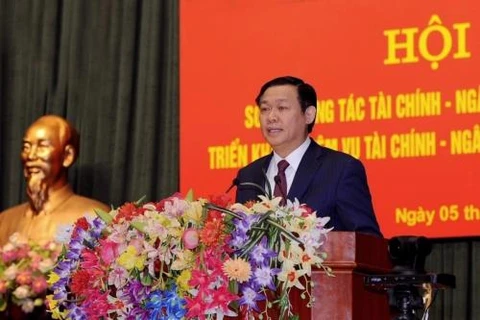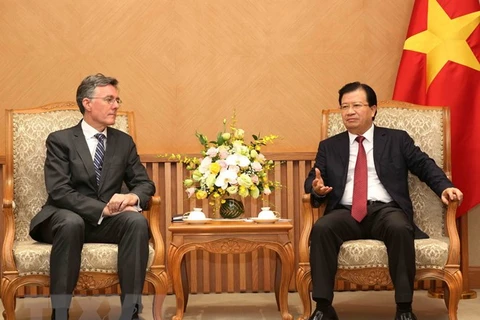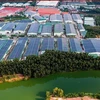Hanoi (VNA) – Deputy Prime Minister Le Minh Khai has signed a decision approving the public debt strategy until 2030, which sets a target of keeping it at under 60 percent of the GDP and Government debts not exceeding 50 percent of the GDP in 2030.
The strategy aims to control the State budget overspending that has been approved by the National Assembly in the State budget estimate and national financial plan for the 2021-2025 period, ensuring debt safety.
Government’s direct debt obligations are expected to not exceed 25 percent of the annual total State budget collection and the national foreign debt obligations, to be below 45 percent of the GDP, according to the scheme.
Governmental bonds will be issued regularly with standard terms, focusing on at least five years in terms, while bonds with terms of less than five years will also be issued flexibly, along with foreign-currency bonds in the domestic capital market to meet the capital mobilisation demands and to complete targets in developing Government bond market.
International bonds will be issued to make up for the annual State budget overspendings on development investment and restructure the Government’s debts in favourable market conditions.
At the same time, efforts will be made to disburse ODA capital and foreign soft loans that Vietnam had borrowed until the end of 2020. New loans will be borrowed for major sectors, prioritising projects that directly promote growth and sustainable development.
Local administrations’ loans will be kept within the scope of local budget overspendings approved by the National Assembly, and within the outstanding loan limit in line with regulations of the Law on State Budget.
Meanwhile, contingent debt obligations will be tightly controlled, while the growth rate of Government guarantee loans will be managed to not exceed the GDP growth rate of the previous year. Alongside, foreign debt of enterprises and credit institutions will be strictly managed at reasonable limits.
The decision took effect from April 14, replacing the decision issued by the Prime Minister on July 27, 2012./.
The strategy aims to control the State budget overspending that has been approved by the National Assembly in the State budget estimate and national financial plan for the 2021-2025 period, ensuring debt safety.
Government’s direct debt obligations are expected to not exceed 25 percent of the annual total State budget collection and the national foreign debt obligations, to be below 45 percent of the GDP, according to the scheme.
Governmental bonds will be issued regularly with standard terms, focusing on at least five years in terms, while bonds with terms of less than five years will also be issued flexibly, along with foreign-currency bonds in the domestic capital market to meet the capital mobilisation demands and to complete targets in developing Government bond market.
International bonds will be issued to make up for the annual State budget overspendings on development investment and restructure the Government’s debts in favourable market conditions.
At the same time, efforts will be made to disburse ODA capital and foreign soft loans that Vietnam had borrowed until the end of 2020. New loans will be borrowed for major sectors, prioritising projects that directly promote growth and sustainable development.
Local administrations’ loans will be kept within the scope of local budget overspendings approved by the National Assembly, and within the outstanding loan limit in line with regulations of the Law on State Budget.
Meanwhile, contingent debt obligations will be tightly controlled, while the growth rate of Government guarantee loans will be managed to not exceed the GDP growth rate of the previous year. Alongside, foreign debt of enterprises and credit institutions will be strictly managed at reasonable limits.
The decision took effect from April 14, replacing the decision issued by the Prime Minister on July 27, 2012./.
VNA
























